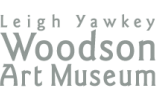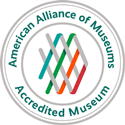 In my June 9 blog post I promised to share the subsequent steps to complete the proofing and printing of the Birds in Art catalog. The presses are scheduled to run August 3-4, so I can’t share that information quite yet. Stay tuned.
In my June 9 blog post I promised to share the subsequent steps to complete the proofing and printing of the Birds in Art catalog. The presses are scheduled to run August 3-4, so I can’t share that information quite yet. Stay tuned.
During the last few weeks my days have been dedicated to matting, mounting, and framing the watercolors, charcoal, and pencil sketches for a new permanent collection exhibition. The installation is scheduled to begin on August 9, just nineteen days from now. YIKES.
The short time frame should not frighten me. After all, I have curated and installed exhibitions  for decades. But this time I’m moving beyond arranging paintings, drawings, and sculptures, by adding audio and video components. As one colleague remarked, it will be a 21st century exhibition. Oh boy, I hope I’m up to the task!
for decades. But this time I’m moving beyond arranging paintings, drawings, and sculptures, by adding audio and video components. As one colleague remarked, it will be a 21st century exhibition. Oh boy, I hope I’m up to the task!
When I began organizing A Naturalist’s Eden: Don Richard Eckelberry’s Birds of Trinidad and Tobago, the first step was to choose a sampling from the vast wealth of materials in our collection. The paintings and drawings were selected first – birds common to Trinidad and Tobago. Done.
 Don Eckelberry was a raconteur. He regaled family, friends, and visitors who came to his home and studio with tales of his visits to Arima Valley, Trinidad, and the people he encountered, all while exalting the beauty of that tropical paradise. These stories, originally on cassette, have been transferred to CD. Today’s technology ensures these recordings can run continuously in the gallery. Another done.
Don Eckelberry was a raconteur. He regaled family, friends, and visitors who came to his home and studio with tales of his visits to Arima Valley, Trinidad, and the people he encountered, all while exalting the beauty of that tropical paradise. These stories, originally on cassette, have been transferred to CD. Today’s technology ensures these recordings can run continuously in the gallery. Another done.
How an artist works remains a mystery to many. Recreating Don’s studio to include the furniture, tools, supplies, and resource materials he used hopefully will dispel part of the myth and bring visitors closer to his artistic process. Almost done.
The Museum now has hundreds of amazing photographs showing Don in various stages of his life, working on myriad projects, and captured with friends and family. With so many choices and limited space, these images will be scanned and presented on a continuous loop video. Nowhere near done.
working on myriad projects, and captured with friends and family. With so many choices and limited space, these images will be scanned and presented on a continuous loop video. Nowhere near done.
Last, and most important, comes the writing task for a brochure, introductory panels, label copy, and photo captions. This information will complete the story of an artist, his adopted home in the Arima Valley, and the amazing artwork he painted there.




